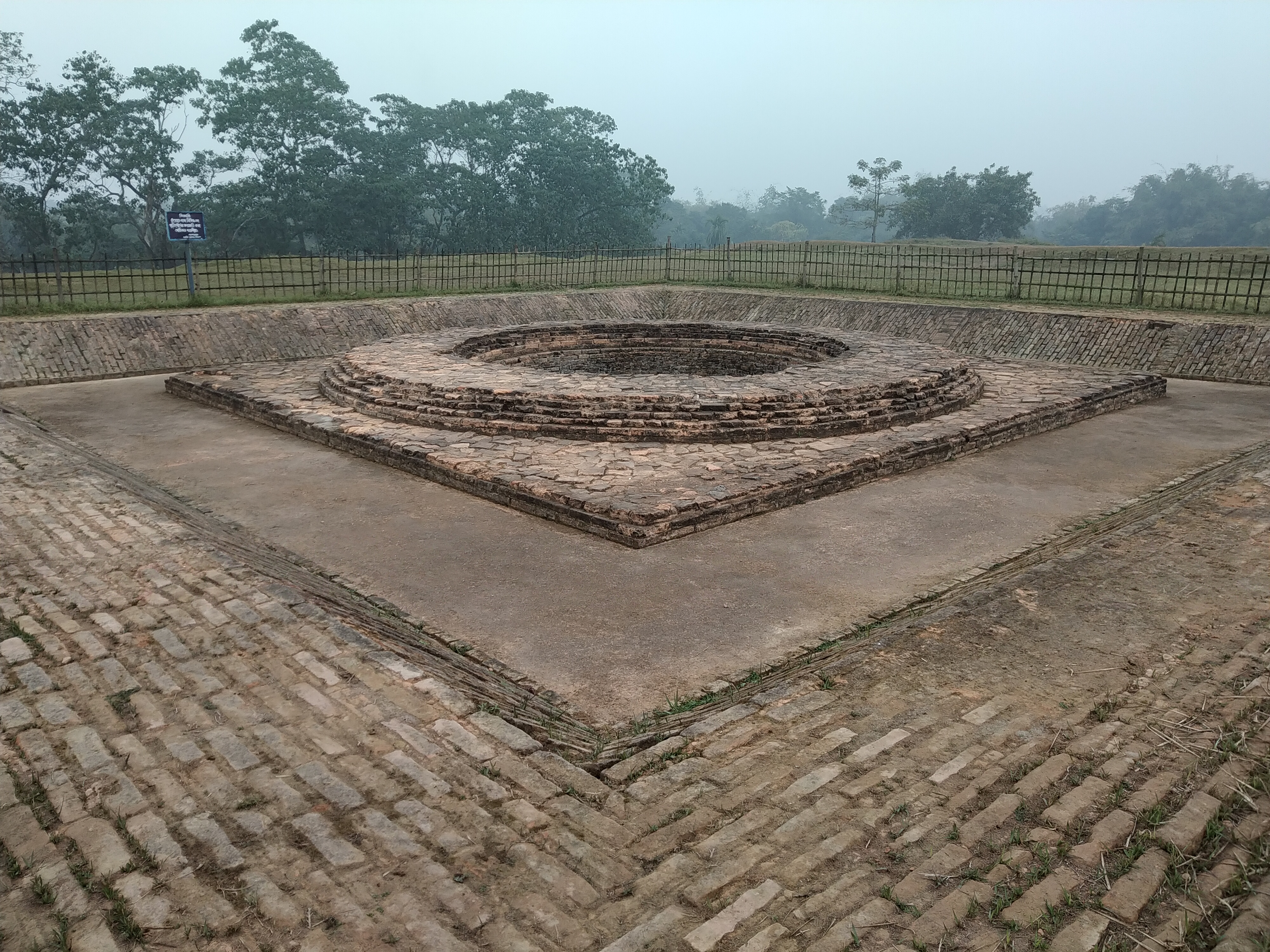Gosanimari on:
[Wikipedia]
[Google]
[Amazon]
Gosanimari (also known as ''Khalisa Gosanimari'') is both a village and an

 The Kamteswari temple was built by Maharaja Pran Narayan in 1665.
The Kamteswari temple was built by Maharaja Pran Narayan in 1665.
archaeological site
An archaeological site is a place (or group of physical sites) in which evidence of past activity is preserved (either prehistoric or recorded history, historic or contemporary), and which has been, or may be, investigated using the discipline ...
in Dinhata I CD block, in the Dinhata subdivision of the Cooch Behar district
Cooch Behar district (), also known as Koch Bihar district, is one of the List of districts of West Bengal, 23 districts of the state of West Bengal in India. The district is the part of Jalpaiguri division, Jalpaiguri Division. Cooch Behar ci ...
of West Bengal
West Bengal (; Bengali language, Bengali: , , abbr. WB) is a States and union territories of India, state in the East India, eastern portion of India. It is situated along the Bay of Bengal, along with a population of over 91 million inhabi ...
, north-eastern India. The name of this site was taken from the modern grampanchyat name of the Dinhata subdivision.
Geography
Location
Gosanimari is located at .Area overview
The map alongside shows the eastern part of the district. In Tufanganj subdivision 6.97% of the population lives in the urban areas and 93.02% lives in the rural areas. In Dinhata subdivision 5.98% of the population lives in the urban areas and 94.02% lives in the urban areas. The entire district forms the flatalluvial
Alluvium (, ) is loose clay, silt, sand, or gravel that has been deposited by running water in a stream bed, on a floodplain, in an alluvial fan or beach, or in similar settings. Alluvium is also sometimes called alluvial deposit. Alluvium is ...
flood plains of mighty rivers.
Note: The map alongside presents some of the notable locations in the subdivisions. All places marked in the map are linked in the larger full screen map.
Excavation

Excavation Site
The site contains ruins of Rajpat which served as the capital of Kamata kingdom, occupying a large area of ancient Kamarupa and Vanga.Excavation history
Dr. Buchanan Hamilton in 1808 had left a vivid description along with a sketch of the mound and site which still hold good in authenticity. According to Dr. R.D. Banerjee, Kamata kingdom stood as buffer between western Kamrupa and theBengal Sultanate
The Bengal Sultanate (Middle Bengali: , Classical Persian: ) was a Post-classical history, late medieval sultanate based in the Bengal region in the eastern South Asia between the 14th and 16th century. It was the dominant power of the Ganges- ...
in the 15th century CE. He is of the opinion that the Khens might have built Gosanimari, but it is also possible that these Mongoloid people only used the ruins of fortification which had been built several centuries earlier. After the independence Archaeological Survey of India
The Archaeological Survey of India (ASI) is an Indian government agency that is responsible for archaeological research and the conservation and preservation of cultural historical monuments in the country. It was founded in 1861 by Alexander ...
took over the responsibility of this site.
Findings
It is believed parts of the ancient kingdoms important temples and buildings are now buried under a large grass grown mound. So far two large stone wells have been excavated, along with a large stone walls and a number of idols too. Pottery work includes vases, bowls, basin, dish, beaker etc. The facial and physiognomical delineation indicate the idols are the products of c. 11th and 12th century AD and influenced by Pala-Sena school of art.Rulers
In 1260, it became the seat of power of Kamata ruler Sandhya, who shifted his capital from Kamarupanagara (present-day North Guwahati) due to the frequent clashes he faced from the Kacharis from the south-east border in what is modern-dayAssam
Assam (, , ) is a state in Northeast India, northeastern India, south of the eastern Himalayas along the Brahmaputra Valley, Brahmaputra and Barak River valleys. Assam covers an area of . It is the second largest state in Northeast India, nor ...
. Later it was held by the Khen dynasty until 1498 AD, when Hussein Shah of Gaur unsurp power by defeating Nilambar of Kamata. From the early 16th century, it was ruled by the Koch dynasty founded by Biswa Singha.
When the English came along they Anglicized the term Koch to Cooch, hence the name Cooch Behar State.
Culture
 The Kamteswari temple was built by Maharaja Pran Narayan in 1665.
The Kamteswari temple was built by Maharaja Pran Narayan in 1665.
Demographics
As per the 2011 Census of India, Khalisa Gosanimari had a total population of 6,410. There were 3,295 (51%) males and 3,115 (49%) females. There were 788 persons in the age range of 0 to 6 years. The total number of literate people in Khalisa Gosanimari was 3,993 (71.02% of the population over 6 years).Healthcare
Gosanimari Block Primary Health Centre, with 30 beds at Gosanimari, is the major government medical facility in the Dinhata I CD block.References
External links
{{Temple towns in West Bengal Villages in Cooch Behar district Archaeological sites in West Bengal History of Cooch Behar